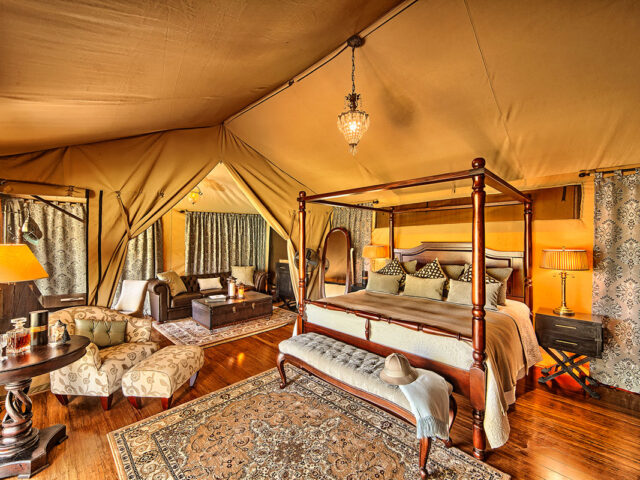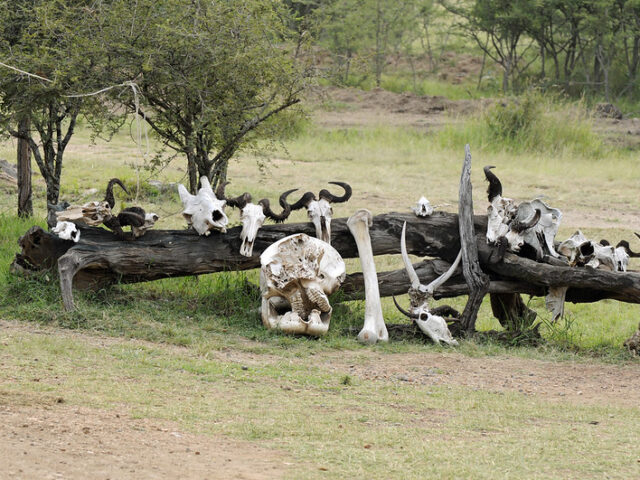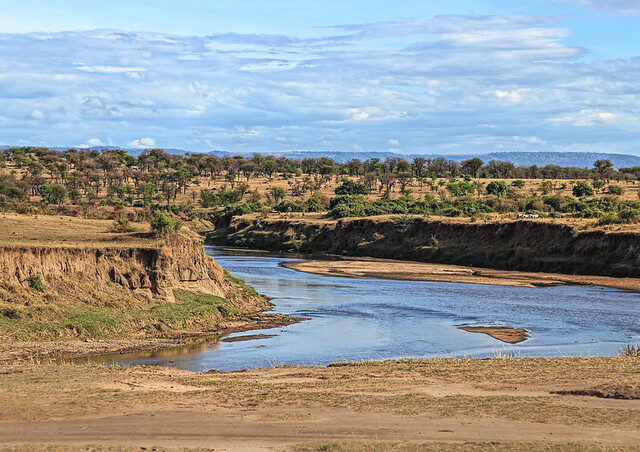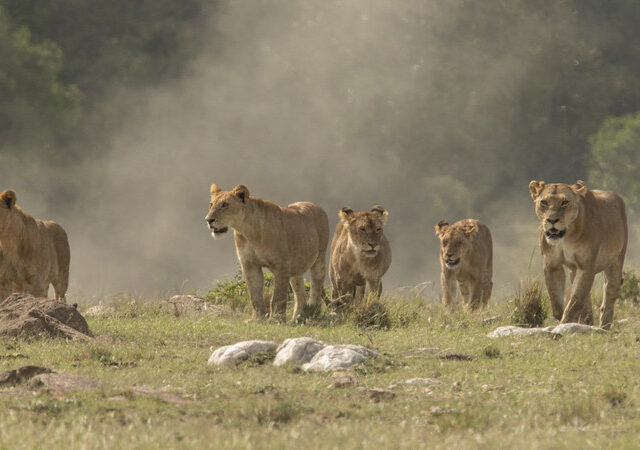Masai Mara National Reserve
The World's Eighth Wonder
Maasai Mara National Reserve, also known as the Maasai Mara or simply the Mara, is a renowned wildlife reserve located in southwestern Kenya. It is part of the larger Mara ecosystem and is known for its exceptional wildlife viewing opportunities, particularly during the Great Migration.
Maasai Tribe
Cultural Encounters In Mara
Cultural encounter in Masai Mara is mainly a visit to the local Masai tribe in Kenya, the Masai where first inhabits, they settled here are practiced various activities. The Masai people are famously known as pastoralists whose lives depended entirely on cattle keeping.
Popular Classic Big Five Safaris In Masai Mara
Guide To Maasai Mara National Reserve
Masai Mara | Maasai Encounters | Wildebeest Migration | Great Migration On Mara River
M
aasai Mara National Reserve is situated in Narok County, Kenya, along the Tanzanian border. It is approximately 260 kilometers (161 miles) southwest of Nairobi.
The reserve is famous for its abundant wildlife, including the “Big Five” (elephant, lion, leopard, buffalo, and rhino). Other wildlife species you can spot include cheetahs, zebras, giraffes, wildebeests, hyenas, gazelles, and numerous bird species.
Maasai Mara is renowned for being a prime location to witness the Great Migration. Every year, millions of wildebeests, zebras, and gazelles migrate from the Serengeti National Park in Tanzania to the Maasai Mara in search of fresh grazing land. This spectacle usually takes place between July and October.
Safari Activities: The most popular activity in Maasai Mara National Reserve is game drives, which allow you to explore the park and spot wildlife. Hot air Balloon safaris, guided nature walks, and visits to Maasai villages to experience the local culture are also available.
Accommodations: Maasai Mara offers a range of accommodation options, including luxury lodges, tented camps, and budget-friendly campsites. These accommodations cater to different budgets and preferences, providing comfortable amenities and proximity to wildlife viewing areas.
Entry Fees: The park entrance fees for Maasai Mara National Reserve vary depending on your nationality, the approximate entrance fees are as follows:
Non-Resident Adults: Approximately $80 per person per day.
Non-Resident Children (between 3 and 17 years): Approximately $45 per person per day.
East African Citizens: Approximately Ksh 1,200 per adult and Ksh 300 per child per day.
It’s important to note that park fees are subject to change, and it’s advisable to check the official website of the Kenya Wildlife Service (KWS) or consult with a reliable travel agency for the most up-to-date information regarding fees, regulations, and any additional charges that may apply.
When planning a visit to Maasai Mara National Reserve, it’s recommended to book your accommodations and safaris in advance, especially during peak tourist seasons, to secure availability and get the best experience.
Masai mara is one of Kenya’ largest national reserve measuring about 1,510 kilometers and stretches up to the plains of the Serengeti National Park in Tanzania. Mara is widely considered as Africa’s greatest Wildlife reserve. It was named in honor of the great Masai tribe who were the firsts in habitat who leaved in Mara and practiced various activities such as cattle keeping, the Masai are originally pastoralists’ who rare cattle for sustainability. The Mara is home to a breath-taking array of life. The Mara Game Reserve is known all over the world for a wide range of wild animals such as the ” big five ” (lion, leopard, African elephant, cape buffalo, and black Rhino) and other popular species like zebra, giraffe, hyena, cheetah, wildebeest, eland and Thomson’s gazelle among others.
It is named in honour of the Maasai people (the ancestral inhabitants of the area) and their description of the area when looked at from afar: “Mara” means “spotted” in the local Maasai language of Maa, due to the many trees which dot the landscape. The reserve is managed by The County Government of Narok and the local Maasai community has been involved in the conservation efforts to contain poaching and other illegal activities.
Masai mara wildlife
Masai Mara National Reserve comprises of both warm and cold temperatures thus I deal destination for the great safari experience. Masai mara is regarded as all year-round safari destination as it offers abundance of wildlife for excellent game viewing all through the year. Masai mara is famous for the big five as well as the Big Nine African animals (lion, leopard, elephant, cape buffalo, and rhinoceros) along with more than 400 bird species identified in the park, many of which are migratory species and with almost 60 species being raptors. Game drive is the highlight of the many activities in the park, with the abundance of wildlife, there greater chances to spot the pride of the lion among other big cats compared to other national parks in East Africa. Game viewing is an all-year-round experience but the best time from July to October is considered the best time of year with millions plus wildebeests seen crossing the mara river from the Serengeti national park in search water and the greener pastures.
Wildebeests Migration
Wildebeests’ migration also refereed as the great trek involves the movement of millions of wildebeest from seen crossing the Mara River into Masai mara in Kenya. The trek is triggered by the search for greener pastures, water and also part of their mating and birth cycles. Also selected as one of the seven wonders of the world, Masa mara national reserve offers an excellent sighting for a unique game viewing. The great migration occurs between the month of July to the end of September although the timing can vary some seasons due to the prevailing rainfall patterns.
Lions
Lions are often the highlight of game viewing safaris in Masai mara, despite the wide range of other animals, a bigger number of visitors in Masai mara have a lion as the top list of game viewing check list when visiting the reserve. Masai mara is fascinating and unique tourist attraction for an exciting game viewing. The reserve is a host to over 800 to 900 lions including the lionesses living around the greater Masai Mara and the surrounding nonservices surrounding the core reserve.
The Masai People
The Maasai are nomadic pastoralists who traditionally make a living out of herding cattle. Originally a Nilotic ethnic group which is said to have migrated centuries ago from the semi-arid Nile valley north of Lake Turkana, the Maasai inhabit the region around Masai Mara as well as large portions of Great Rift Valley. The Maasai have their unique nomadic culture and way of life not to mention their traditional dress of red or brightly coloured ”Shuka’s” or body drapes make them one of the Unique tribes in Africa worth visiting.
During your visit, you will meet the typical Maasi people, you encounter with them will guide to clearly understanding the way of life of the Maasai, they also demonstrate lots of other activities traditional way of milking the indigenous cows, traditional dances, local foods and the modelled traditional grass thatched houses.
Area and location
Situated in the south western region of Kenya, Masai mara is one of Africa’s greatest national reserves. The reserve covers approximately 1510 square kilometres or 580 square miles, bordering Serengeti National Park in the southern region. Its one of the spectacular places to go on a life time safari experience. A major part of Kenya is carved almost vertically by the Great Rift Valley and the Mara reserve is situated within the vast valley formations.
Scenery and Landscapes
The worked Mara is referred as spotted its also where the reserve derived its name, from the typical landscape of short bushy trees and shrubs dotting the huge rolling grassland plain. The savanna grass highly dominates the landscape in Masai mara. Acacia woodlands, and riparian forests and rocky hills intersperse the flat plains.
Best time to visit Masai mara National Reserve
The best time to visit the Masai Mara National Reserve in Kenya depends on what you want to experience during your visit. The reserve is a year-round destination with something to offer in every season, but there are a few key factors to consider.
The Great Migration: If witnessing the famous Great Migration is high on your list, the best time to visit is between July and October. During this period, millions of wildebeest, zebras, and other herbivores migrate from Tanzania’s Serengeti National Park to the Masai Mara in search of fresh grazing lands. This is a truly spectacular event and attracts visitors from around the world.
Wildlife Viewing: For general wildlife viewing, the dry season from June to October is excellent. The vegetation is less dense, and animals gather around watering holes and rivers, making them easier to spot. The weather is also drier during this time, reducing the risk of rain disrupting your game drives.
Birdwatching: If you’re interested in birdwatching, the rainy season from November to May is ideal. Many migratory bird species arrive during this time, and the birdlife is abundant. The landscape is lush and green, which can provide stunning backdrops for photography.
Balloon Safaris: Hot air balloon safaris are a popular activity in the Masai Mara, offering a unique perspective of the reserve from above. These safaris are typically available year-round, but they are highly weather-dependent. Calm winds and clear skies are essential for a safe and enjoyable experience, so it’ s best to check with local operators for the most suitable conditions.
It’s important to note that weather patterns can vary, and there may be some fluctuations in wildlife behaviour and migration timing from year to year. It’s always a good idea to consult with local tour operators or travel experts who have up-to-date information on the conditions and can help you plan your visit accordingly.
Best Masai Mara Safari Lodges & Camps
The Masai Mara is one of the world’s greatest wildlife destinations. Not much can beat the delight of all year-round game viewing, let alone all the thrills of the Wildebeest Migration. Therefore, in order for you to experience the world’s most famous, means you need to put several factors in to consideration when choosing your Masai Mara accommodation.
Amani Mara Camp, Angama Mara, Emboo River, Kichwa Tembo Tented Camp, Mahali Mzuri, Mara Engai Wilderness Lodge, Mara Ngenche Safari Camp, Mara West Camp, Sand River Masai Mara, Zebra Plains Mara Camp
Choosing which area to visit and when to go to the Masai Mara will impact your experience. The Masai Mara National Reserve’s central region is busiest during the migration season (about August to November) and its many lodges and safari hotels cater for large numbers of people. The private conservancies in the north offer more seclusion and tucked-away accommodation, such as luxury tented camps and decadent safari suites. Plus, you’ll be able to enjoy a greater selection of activities like guided walks, night game drives and stargazing. The eastern region of the national reserve is closest to Nairobi and the accommodation is consequently larger in scale, catering for scheduled tour groups and the like.
Remember, however, that the Masai Mara delivers great game viewing throughout the year and your safari experience will certainly be different during the quieter low season (about November to March). You might not get the Wildebeest Migration’s herds, but there’s plenty else to see and a wide range of places to stay; many of which offer discounted, out-of-season rates.
How to get to Maasai Mara National Reserve
To get to Maasai Mara National Reserve in Kenya, you can follow these general directions:
By Air:
Fly into Jomo Kenyatta International Airport (NBO) in Nairobi, which is the primary international gateway to Kenya.
From Nairobi, you have a few options: a. Take a domestic flight from Wilson Airport (located near Jomo Kenyatta International Airport) to one of the airstrips in Maasai Mara. Several local airlines operate regular flights to destinations like Keekorok, Ol Kiombo, Musiara, or Mara Serena. b. Arrange a chartered flight directly to one of the private airstrips within or near Maasai Mara National Reserve. Many lodges and camps have their own airstrips for guests.
Popular Safaris
All About QENP
- History Of The Park
- Things To Do
- Places To See
- Getting There
Other National Parks & Reserves To Visit In Uganda
Queen Elizabeth National Park
A Medley Of Wonders
Bwindi Impenetrable National Park
The Ultimate Gorilla Experience
Murchison Falls National Park
The World's Most Powerful Waterfall
Mount Rwenzori National Park
The Mystical Challenge









